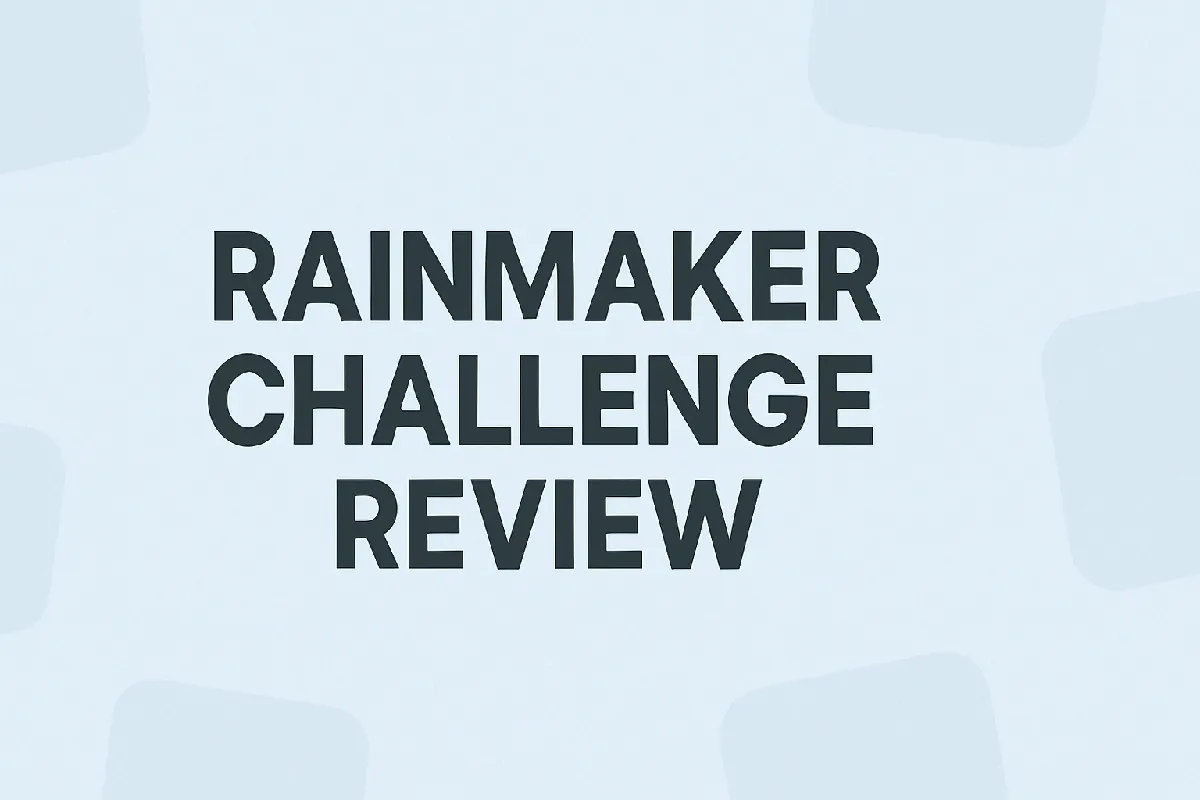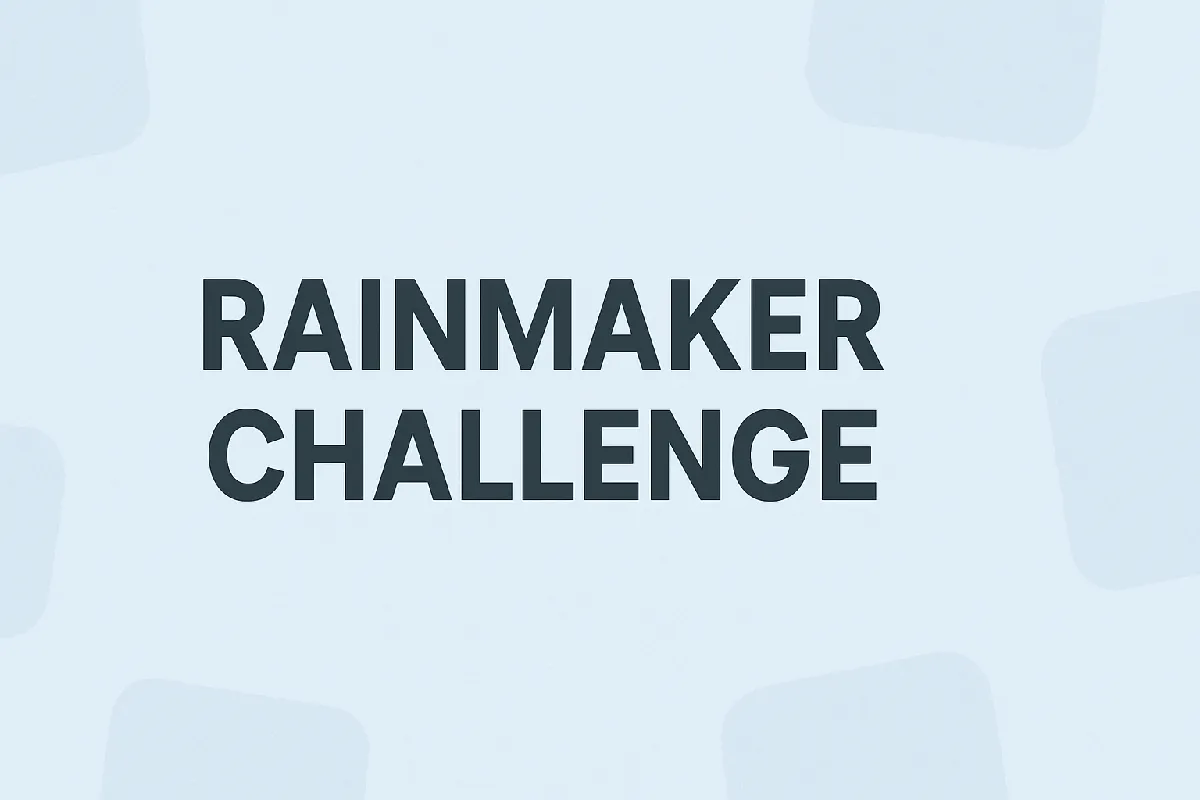Rainmaker Challenge Review - Here's What to Expect From This Platform
Welcome to this Rainmaker Challenge review. The program begins with a 7-day trial that’s often promoted as a hands-on way to learn the basics of starting an Amazon FBA business.
After that first week, there’s a subscription model that runs at $28 per month, giving continued access to their community, training, and calls.

At first glance, the barrier to entry feels low — a week to test the waters, then a manageable monthly fee.
But as with most models in this space, the real weight shows up later. The challenge is only the front door.
Deeper mentorship and mastermind options are introduced beyond the trial, and those carry much steeper costs, often in the thousands.
That transition is where a lot of people either feel pushed to level up or realize the starter plan isn’t enough to hit the results they expected.
There are members who’ve shared wins — launching products, making sales, and feeling motivated by the community.
At the same time, plenty of others struggled with ads, sourcing costs, and the steep jump in investment once the entry period ends.
Pros
Affordable 7-day trial and $28/month subscription
Clear, structured 7-day introduction to Amazon FBA
Supportive group and accountability calls
Cons
Higher-ticket upsells beyond the entry offer
Typical results don’t always match early expectations
Refunds and guarantees feel conditional and limited
What I kept coming back to was the same gap I’ve seen in so many programs: the difference between what’s taught and what people experience. If you want to understand why that gap exists, you’ll find it here.
What is the Rainmaker Challenge?
The idea is to give newcomers a structured path through daily lessons, tasks, and group interaction that gradually build on each other.
Instead of handing over a pile of content to binge, the material is drip-fed in a way that creates a sense of progression.
The daily format keeps things practical. One day might focus on finding product ideas, while another emphasizes the basics of sourcing.
By the end of the sequence, the pieces connect into a bigger picture of how selling on Amazon could work. That structure makes it less intimidating than trying to navigate everything on your own.
Another key part of the setup is the interactive side. The program uses community groups, live calls, and Q&A sessions to keep participants accountable.
That design helps reduce the sense of isolation that often comes with self-paced learning.
Seeing others share wins and setbacks provides perspective and makes it easier to stay engaged.
Overall, the challenge serves more as a starting framework than a full education.
It lays out the first steps clearly, but it also makes it clear that further progress requires additional guidance and resources beyond the initial experience.
My Personal Experience With The Rainmaker Challenge

Going through the challenge gave me a clearer sense of how structured and intentional the setup really is.
Each day built on the last, with a mix of short lessons and tasks that kept me moving forward.
The accountability aspect was probably the strongest part — instead of passively watching content, I felt nudged to actually do something each day, whether it was researching a product or setting up an account.
That made it feel less overwhelming than trying to piece things together on my own.
The seven-day structure worked well as an introduction. By the end of the week, I had a surface-level understanding of how to look at products, what sourcing might involve, and how Amazon FBA can scale if done correctly.
What stood out, though, was how quickly the narrative shifted from “here’s how to start” to “here’s how to really succeed if you invest more.”
That transition was clear: the low-cost entry only scratches the surface, while the more serious steps are tucked behind higher-ticket coaching offers.
I also noticed how motivating the community was in the beginning. Seeing other people share wins, struggles, and questions made it easier to keep going.
But it also highlighted the divide: some had the resources to jump into the higher-priced mentorships, while others stayed at the starter level and didn’t move much further.
For me, it was a useful experience to understand how the model operates, but it became clear that real progress requires more than the entry plan.
What I realized is that progress isn’t about how fast you move in a week — it’s about avoiding the same pitfalls that cause so many to stall out later.
If you want to see why that happens so often, you can take a look here.
How Much Does Rainmaker Challenge Cost and What's The Refund Policy?
The entry point is presented as a seven-day trial that transitions into an ongoing subscription at $28 per month.
That subscription grants continued access to the training materials, live sessions, and the community space.
It’s positioned as a way to keep building after the initial challenge without committing to larger expenses right away.
Beyond that, the structure opens into higher levels of mentorship. These aren’t advertised as clearly up front, but they exist, and they’re marketed to those who want more direct support and faster results.
That’s where the cost shifts from being a small monthly subscription to a much bigger financial commitment.
The jump can be jarring if you went in expecting the starter plan to be enough on its own.
As for refunds, the terms are framed around performance guarantees. There’s language about giving the challenge a fair shot before requesting a refund, which places the burden on the participant to prove they completed each step.
While this type of conditional guarantee is common, it’s worth noting that it doesn’t offer the same flexibility as a straightforward money-back policy.
In short, the starter subscription feels accessible, but the reality is that the program is structured to guide participants toward higher-ticket coaching.
The refund system provides a safety net only if you’ve followed their instructions to the letter, which can make it harder to claim than it might first appear.
Rainmaker Challenge Student Results and Testimonials
One of the things I noticed early on is how visible student stories are throughout the program’s marketing.
Screenshots of wins, testimonials from families, and posts about breakthroughs are front and center.
The challenge does create an environment where people share their progress openly, and that gives it a sense of community momentum.
Seeing others celebrate a product launch or their first sale can be motivating, especially if you’re new and trying to picture what success could look like.
That said, the results are far from uniform. Some participants talk about quick wins — finding a product in the first week, moving forward confidently, and even seeing early sales within months.
Others share a very different experience: struggling to find a viable product, losing money on ads, or simply feeling stuck after the challenge ends.
It became clear to me that while the program provides tools and structure, the outcomes depend heavily on what someone can invest in terms of time, money, and persistence.
There’s also the reality that the most enthusiastic testimonials often come from those who went beyond the entry-level plan and invested in the higher-ticket coaching.
The stories from people who stayed at the basic subscription level don’t always look as shiny.
For me, it highlighted that while the community vibe is strong, the results vary widely, and what’s showcased in the marketing isn’t necessarily representative of the average participant’s journey.
Who is the Rainmaker Challenge Best For?
This program is structured in a way that appeals most to beginners who want a clear introduction to Amazon FBA without getting buried in endless content.
The step-by-step challenge design makes it approachable for people who prefer learning through small, guided tasks rather than long lectures.
The accountability from live calls and group activity also makes it a better fit for those who need external motivation to stay consistent.
It also seems to resonate with people who like the idea of building something on the side but don’t yet have the confidence to dive in alone.
The seven-day format lowers the initial barrier and gives a taste of what the process feels like before asking for a bigger commitment.
That’s an attractive setup for someone who wants to experiment with e-commerce without immediately risking large sums.
On the other hand, it’s not as strong of a fit for people who are already deep into Amazon FBA or who want a complete roadmap in one package.
The challenge deliberately stops short of providing the whole picture, steering participants toward advanced coaching if they want more.
For anyone already experienced, the material might feel too surface-level to justify even a short investment of time.
In the end, the strongest candidates are beginners who thrive in structured environments, like accountability-driven learning, and are open to the idea of eventually investing more if they find the process aligns with their goals.
Rainmaker Challenge Pros and Cons
Every program has its strengths and weaknesses, and this one is no different. What stood out most to me was the way both sides became clear once I spent time inside.
On the positive side, the structure itself is well thought out. The daily tasks are manageable, the pacing keeps things moving, and the community aspect provides encouragement that you don’t always get in self-paced learning.
That sense of momentum matters, especially for someone starting from scratch.
On the downside, the limitations reveal themselves quickly. The content gives you enough to understand the basics but not enough to run a business without extra guidance.
The push toward advanced coaching also changes the tone of the experience — what begins as an accessible introduction can quickly feel like a gateway to bigger expenses.
The variability in outcomes is another point worth noting. Some participants share quick wins, while others never get beyond the basics, and that unevenness makes it hard to rely on the testimonials as a measure of what to expect.
In short, the balance comes down to whether you value the structure and accountability enough to offset the upsell-driven model and the inconsistent results.
Final Verdict
The daily lessons and group interaction make the process approachable, especially for people who prefer a guided start rather than figuring things out alone.
It does a good job of showing what the first steps look like, and that can help beginners build early confidence.
Where it falls short is in its depth. The challenge doesn’t provide a complete path, and anyone who wants lasting results will likely find themselves encouraged to explore more expensive options.
That shift changes the experience from being an affordable entry into something that carries a much larger commitment.
Coupled with the wide gap in student outcomes, it’s clear that not everyone will walk away with the success stories highlighted in the marketing.
For someone looking for a short-term, structured introduction, this program serves its purpose.
But if you’re expecting a full solution or a guaranteed return, it’s better to approach it as a starting point rather than an end goal.
The real decision is whether that first step is worth it to you, knowing what comes after.
The biggest takeaway for me wasn’t about the program itself, but about why so many people still end up stuck after trying systems like this. If you’ve ever wondered why that happens, you’ll find the answer here.